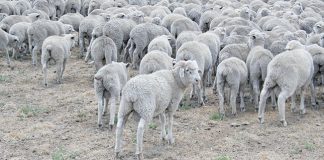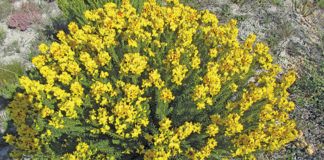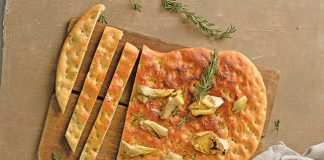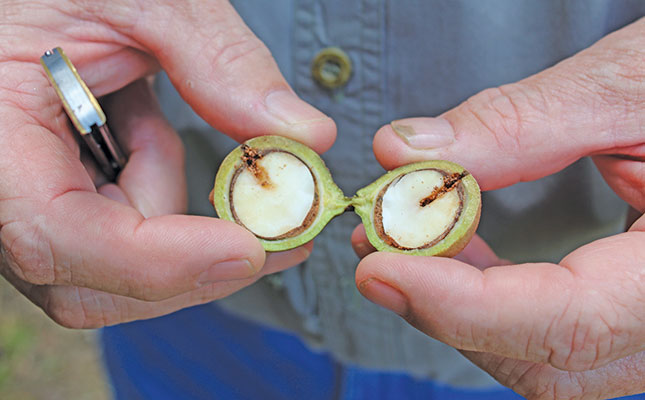
Photo: Lindi Botha
Macadamia farmer Dian Pretorius from Brondal, Limpopo watched as his unsound kernel recovery (USKR) percentage rose year after year. Averaging under 3% in the late 2000s, it steadily climbed to reach 5% and then over 6% in 2018, causing his profits to dwindle.
Then, in a single year, Pretorius dramatically reversed the decline, so much so that he received a quality award at his local processor, Green Farms Nut Company, for the 2019 season.
In the macadamia industry, the 5% USKR mark is regarded as critical; once farmers exceed it, they very seldom recover. Instead, it tends to rise steadily thereafter.
Barry Christie, group agricultural technical manager at Green Farms Nut Company, notes studies where farmers’ USKR was measured over five seasons.
“In general, growers who ended under 5% USKR in 2018 came from a slightly higher USKR, whereas those that had 5% USKR or higher only got worse. It’s statistically unlikely to get out of the trend once you exceed 5%, unless you change something drastic.”
He adds that the orchard will never be completely free of pests, but once a farmer has a high pest load, it becomes difficult to manage.
“If you have 90% control of 10 insects, as opposed to 90% control of 100 insects, you’re that much better off. Once you get to a critical mass of pests, it becomes very hard to control.”
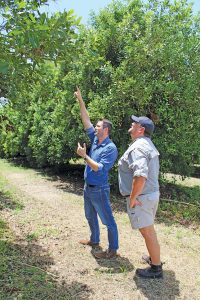
Knowing the make-or-break point all too well, Pretorius set about investigating his pest control regime on his family’s farms spread across the Lowveld in the Brondal and Kiepersol areas.
The macadamia orchards, which cover 150ha, contain trees that vary in age from one year old to 15 years old, and of seven varieties: ‘788’, ‘816’, ‘Nelmak 2’, ‘Nelmak D’, ‘Beaumont’, ‘842’ and ‘849.
A separate management programme is required for trees of each age, complicating matters. About 50ha are fully matured, while the rest are in varying ages of production.
Pretorius says that tree age is the main obstacle in management, and older trees, in particular, require considerable pruning.
As far as pests are concerned, stinkbugs are the main culprits behind high USKR, which prompted him to start his investigation by examining his chemical spraying programme.
Spraying
Reaching over 6% USKR was a wake-up call for Pretorius. “Looking back at everything we did on the farm to reduce our USKR, technology played the biggest role in reversing the bad quality,” he says.
Pretorius received his first eye-opener when he bought a drone and flew it over the spray cart while it was in operation.
“Previously, I’d walk behind the spray cart to check that the chemicals were being applied properly. From that vantage point, it appeared as if the entire tree was being covered. But when I looked at the drone footage, I could immediately see that we weren’t reaching the top of the trees.
“I also saw that the spray penetration wasn’t sufficient. Even at a row spacing of 7m and an inter-row spacing of 3,5m, I realised that I had to prune each tree heavily to open up the centre for better penetration.
“Pruning the trees shorter was also important. I trimmed them down from 8m to 5,5m because my spray cart can reach only 6m. I did the pruning mechanically with an all-cutter because there was just too much pruning that needed to be done. In future, I’ll do hand-pruning.”
Christie advises that when trees are pruned down, the highest branch must be left protruding, while the others are cut.
“If the whole top of the tree is removed, new shoots will start competing to get to the top and the regrowth will be vigorous and vertical. By leaving the tallest branch as a central leader structure, it sends a hormone signal to the rest of the tree that there’s already a branch there and the new shoots don’t need to rush in to fill the gap. Regrowth control thereafter is just as important to prevent a dense outer canopy from forming.”
Pretorius bought two more sprayers, which reduced his turnaround time, and carried out tests with fluorescent tracer dyes to measure penetration. The results of these showed a great improvement in penetration after the pruning.
Tracking
Technology such as the GPS tracking system FarmTrack, which is attached to a tractor and tracks its movements in the orchard, has enabled Pretorius to switch all his chemical application to night-time spraying.
“Previously, it was only during the flowering season that we applied chemicals at night; we did this to protect the bees in the orchards. But now I spray only at night, regardless of the time of year, because there’s less wind at night than in the day.”
Pretorius says that spraying at night had been problematic as he could not be present in the orchard all night long to monitor the process. With FarmTrack, he can check up on progress by smartphone, viewing the rows sprayed and the precise speed and location of the tractor.
“For those few hours when I’m not physically in the orchard, I can still see exactly what’s happening.”
According to Christie, night-time spraying has also significantly improved the efficacy of the process; pests can be more accurately targeted, as they tend to be stationary at night when the temperature is lower.
The cooler conditions also result in less evaporation of the chemicals, while the lower temperature and lack of sunlight ensure that the active ingredients in the chemicals stay effective for longer.
Pretorius has also achieved greater efficiency by reducing the volume of water in the spray tanks.
“We started with 2 000ℓ/ha and now we’re on 3 000ℓ/ha for the mature trees. We’ve done tests on 4 000ℓ/ha and 5 000ℓ/ ha and this resulted in a lot of wastage. Much of the chemical just drips off the leaves and drenches the soil at these high rates. I use a mister to ensure that the droplet size is smaller, so it’s more likely to stay on the plant.”
He adds that he and his neighbour try to spray at more or less the same time; this helps prevent pests from retreating to adjacent orchards and then returning later.
Another weapon in Pretorius’s arsenal has been a weather station that he erected on the farm. This has had a major impact on reducing USKR, as his spraying programmes are better executed and more cost-effective.
“Previously, we would have a tractor driver arrive for his night shift, only to find that clouds had started gathering. He’d then sit and wait to see if it was going to rain and if the night shift should be cancelled. By 8pm, if it still hadn’t started raining, he would mix the chemicals in the tank. Then the first drops would begin falling, and he’d be forced to stop work, go back home and return the next day. By then I’d paid for a night’s work and lost a tank of chemicals, but nothing had been achieved.
“The weather station helps us monitor wind and rain predictions, and plan the best time for spraying.”
Winning results
After just one season, Pretorius’s plan to remedy his high USKR has borne fruit. By taking his USKR from 6,5% in 2018 to just 1,7% in 2019, he added R1,7 million to his bottom line.
Christie explains that if 5% of a theoretical 150t crop is unsound, about 21,5t is discarded, which is 15% of the crop.
“This is because ‘unsound’ is expressed as the total unsound kernel, which is a percentage of nut-in-shell (NIS). The average crack-out [kernel recovery] in South Africa is probably around 35%. At a price of R75 000/t of macadamia NIS, the farmer loses about R2 150/t for every 1% increase in USKR.”
Pretorius says that while the technology he has implemented has been a great help, it has not been prohibitively expensive. His advice to farmers struggling with rising USKR is to investigate their spraying regime.
“Check to see if the trees are being completely covered and penetrated. If you’re not spraying correctly, you can’t tackle the pest load properly. Make sure your spray cart is effective and that trees are not higher than 6m. Test sprayers on your own farm before you buy. And look at what technology you can use to assist you in your operations.”
Email Dian Pretorius at [email protected], or Barry Christie at [email protected].









